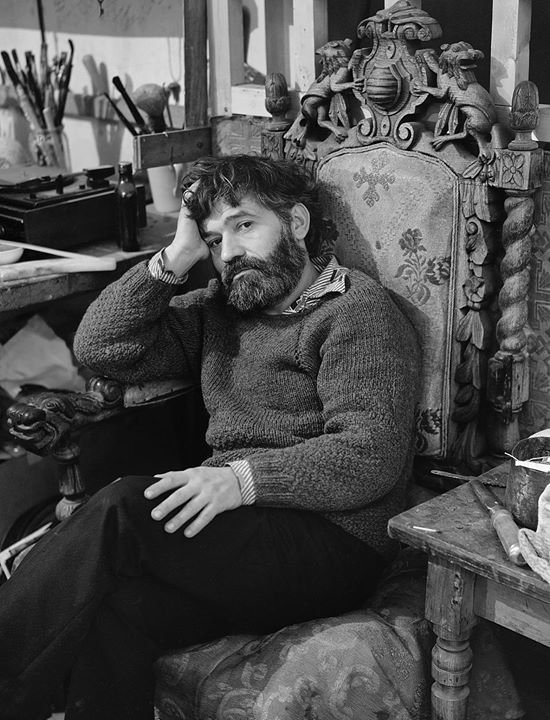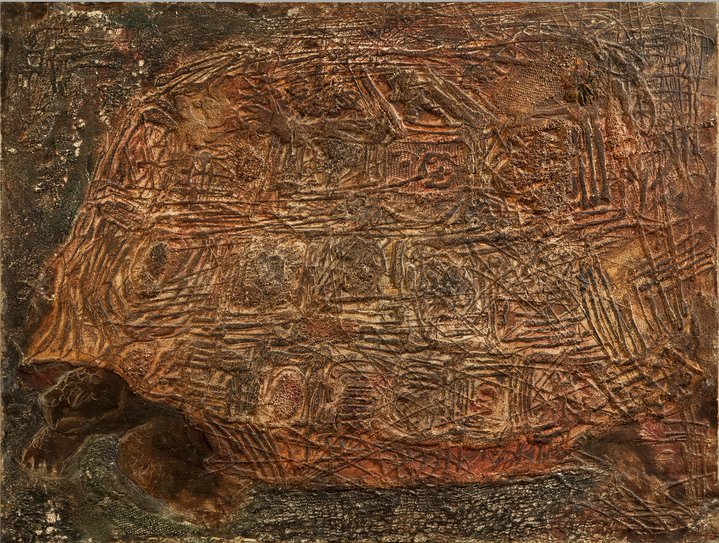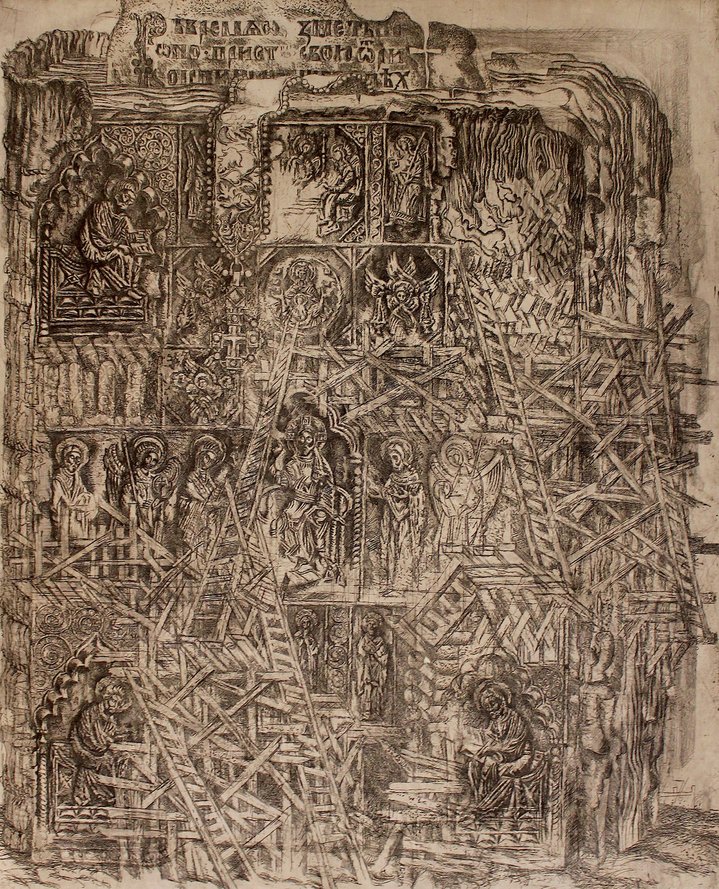Dmitri Plavinsky — the great cryptographer

Dmitri Plavinsky. Photo by Igor Palmin
An exhibition by non-conformist painter Dmitri Plavinsky has opened in Moscow at the Vellum Gallery. It will run until the 15th of July and includes paintings, drawings and etchings drawn from different periods throughout his long career.
When talking about his paintings and graphic art, Plavinsky invented the term ‘structural symbolism’ which he saw as a key feature not only of Russian art as a whole, but he related it to “national self-perception”, “which is based on a proto-image split into rows of symbols”. His explanation is far from clear, but clarity never lay at the heart of his concerns; on the contrary, the mystery, hermeticism and ambiguity of Plavinsky’s works are essential to their appeal. His paintings have always been multi-faceted, textured and intricate both figuratively and technically.
The artist himself considered the year 1977 a watershed moment in his career. At that time he developed his own technique, creating in his paintings “a varnish-and-glaze space which absorbs the object and dematerialises it”. Theimages in his works are quite easily recognisable, comprising geographical maps, fish, birds, turtles, tree leaves among other popular subjects. When superimposed on one another, however, covered by numerous layers of transparent paint, they lose their ordinariness and become like ancient fossils or fantastical objects, which cast a kind of spell on the viewer. At the end of the 1980s musical notation and fragments of musical scores appear in his paintings showing his deep love ofmusic. Graphic art is an extensive part of Plavinsky’s oevure, and it is easy to see from his etchings the influence ofAlbrecht Dürer, an artist he deeply admired.
Dmitri Plavinsky received his professional education at the (curiously named) ‘Moscow Art School in Memory of 1905’, and soon began exhibiting his work, not at officially sanctioned shows, but in the private apartments of admirers of artistsnot accepted by the authorities. He lived modestly, off occasional earnings and the sale of his paintings, a rare event, but traveled extensively around the Soviet Union. His journeys took him to medieval Russian towns and Soviet Central Asia, so you could see in his work an obvious influence of Russian icon painting and Eastern mysticism. The unofficial exhibitions in private apartments were so popular with Muscovites and foreign diplomats, and non-conformist artists were so socially active, that the city authorities eventually allowed them to establish their own association, Gorkom Graphikov (The City Committe of Graphic Artists), which Plavinsky joined and he actively participated in the association's exhibitions.
With the fall of the USSR, and newfound freedoms to travel abroad, in 1990 Plavinsky moved to the United States where he lived for over a decade. During this time he travelled widely around the world, his experiences and impressions in Italy, Greece and Israel provided subjects for new cycles of works. The tragic events of 9/11 in New York are reflected in ‘The Apocalypse of September 11’, in which the city appears as a giant Tower of Babel, its inhabitants cast straight down into Hell. Plavinsky spent the last years of his life in Moscow, his hometown, and died of a heart attack in 2012.
His professional life was undoubtedly a happy, fulfilled one. In his younger years, he did not find many buyers for his work but he did manage to make some sporadic sales, and as early as 1967 his paintings were even exhibited in New York. He lived the life he wanted, with lots of travel. He was always respected in Russia, and later gained wide recognition. And, most importantly, he always worked independently, demanding neither recognition nor understanding, irrespective of either the exacting standards of the Soviet art establishment, or the trends and fashions of the international contemporary art world.










